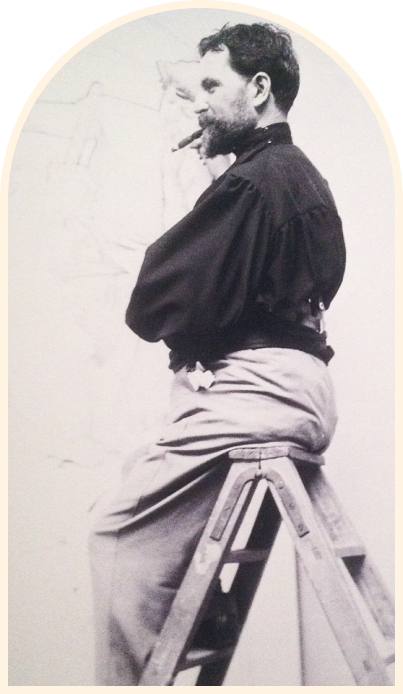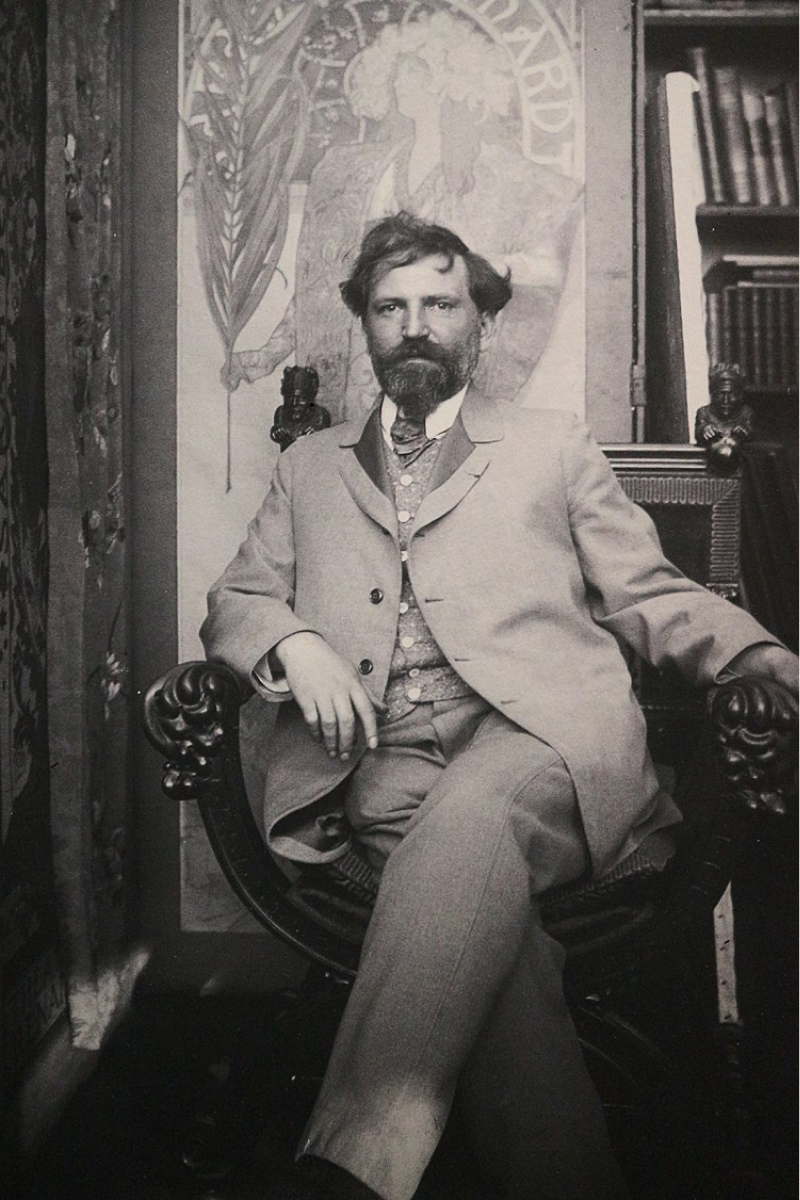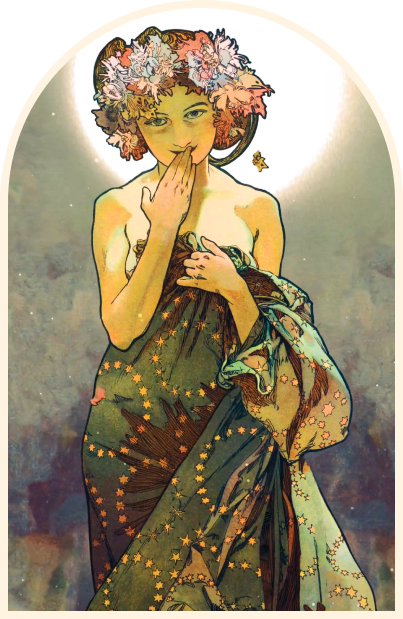Early years and education
Alphonse Maria Mucha was born on July 24, 1860, in the Moravian town of Ivančice. He inherited his artistic gifts from his beautiful and educated mother, Amálie. His father was her husband, Ondřej Mucha. As family stories go, young Alfons could draw before he could walk, with his mother tying a pencil around his neck so he could draw while crawling on the floor.
A bright child with a natural talent, he also possessed a bohemian temperament. Due to his musical talent, he was able to attend the Slavic Gymnasium in Brno, earning a scholarship as a choir singer at St. Peter and Paul’s Cathedral. Nevertheless, he was expelled from the gymnasium and later made a living as a clerk at the court in Ivančice, although he spent most of his time drawing.
Artistic beginnings
Alfons painted decorations for amateur theater groups, designed invitations, and posters. However, when he once spent time sketching defendants instead of recording court proceedings, he was dismissed. At the age of nineteen, he moved to Vienna, where he found a position as a theatrical set painter with one of the best local theater companies, Kautsky-Brioschi-Burghardt.
After two years, Mucha returned to Moravia, where he created decorations for the residence of Count Khuen-Belasi, who became so fond of his work that he decided to financially support the young artist in his further studies. This allowed Alfons to study art in Munich and later in Paris. However, due to transferring to a different university in Paris, he lost his financial backing. To make a living, he began creating illustrations for French and Czech publishers. He successfully built a reputation as a reliable and successful illustrator and began offering drawing classes.
Breakthrough project
The turning point came when Mucha was commissioned to create a poster for a play starring actress Sarah Bernhardt. Sarah was ecstatic with the result, as were the people of Paris. It is said that people bribed poster hangers to acquire the poster, and some even cut it out directly from the advertising boards.
Following the success of the poster for the famous Parisian actress, Mucha received more and more commissions for posters, calendars, and postcards. Over the next decade, he became established as a leading figure of the Art Nouveau style, which gave applied arts a new dimension. His first solo exhibition in Paris took place in 1897, and over the next two years, his works were showcased in Vienna, Budapest, Munich, Brussels, London, and New York.
From illustrations to the slav epic
Soon, an idea for his greatest work—the Slav Epic—began to form in Mucha’s mind. He spent some time in the United States, working to secure funds for this series of paintings portraying Slavic history. After returning to Bohemia from America, he worked on the decoration of the Municipal House, which still captivates visitors today. It was at this time that he began work on the Slav Epic, a cycle of twenty paintings that took him eighteen years to complete.
In the autumn of 1928, during the celebrations of the tenth anniversary of Czechoslovakia’s independence, the public was able to admire all twenty paintings in the Great Hall of the Trade Fair Palace. Mucha’s magnum opus was finished.
Tragic end
Alphonse Mucha spent the rest of his life in his native country. Together with his wife Marie and their children, they lived in their own villa in Bubeneč, Prague. His wife handled commissions, set prices, and coordinated work with models. During this time, Mucha managed to design a stained-glass window for the Neo-Gothic northern nave of St. Vitus Cathedral in Prague, and also created a large lunette painting for the Hlahol association house, which now decorates the large hall on the ground floor of the building.
When the Nazis invaded Czechoslovakia in March 1939, Alphonse Mucha was among the first to be taken by the Gestapo. He was imprisoned and subjected to harsh interrogations for several days. Although the elderly artist was eventually released, he returned home with severe pneumonia, which led to his death. He passed away on July 14, 1939. The occupying forces banned a state funeral, but crowds still accompanied the artist on his final journey. Alphonse Mucha was laid to rest at a tomb in the Vyšehrad Cemetery.












